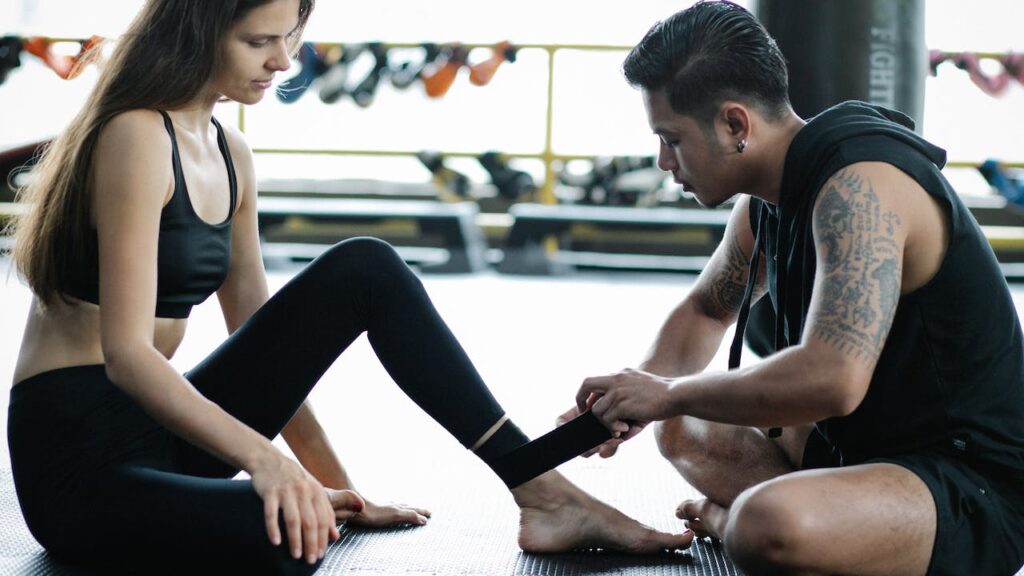When it comes to high performance and injury prevention in the world of sports, sports tape is an unsung hero. Its applications are vast and varied, providing support, stability, and relief to athletes across all disciplines. In this comprehensive guide, we will explore the wonders of sports tape, its types, applications, benefits, and the best practices for its use.
What is Sports Tape?
Sports tape, commonly known as athletic tape, is a therapeutic tape that is applied to the skin to maintain a stable position of bones and muscles during athletic activity. It is designed to mimic the skin’s elasticity, allowing for a full range of motion.
Types of Sports Tape
- Kinesiology Tape: This elastic strain tape helps stabilize and support muscles without restricting movement.
- Rigid Strapping Tape: Often used for taping ankles and knees to provide a higher level of support and reduce range of movement.
- Elastic Adhesive Bandage (EAB): Used primarily for compression and support.
- Cohesive Bandage: Sticks to itself but not the skin, ideal for providing support without stickiness.
History of Sports Tape
The concept of taping has its roots in therapeutic practices dating back to the early 20th century. However, it wasn’t until the 1970s that Dr. Kenzo Kase developed kinesiology tape with the intention of creating a tape that could aid the healing process inherent in the human body.
The Science Behind Sports Tape
The application of sports tape is grounded in the science of kinesiology. It affects the integumentary, muscular, and circulatory systems by lifting the skin and creating a small space between the muscle and dermis layers. This space allows for a decrease in inflammation, improved circulation, and pain relief.
Benefits of Sports Tape
- Pain Relief: Reduces pressure on pain receptors under the skin.
- Reduced Swelling and Inflammation: Enhances circulation and lymphatic drainage.
- Prevents and Treats Injuries: Supports weak zones and can help in the recovery of common sports injuries.
- Enhanced Performance: By supporting muscles and joints, athletes can often perform better.
How to Apply Sports Tape
Step-by-Step Guide
- Prepare the Skin: Clean and dry the area where the tape will be applied.
- Cutting the Tape: Measure and cut the tape according to the area of application.
- Applying the Tape: Follow specific patterns of application for the body part you are taping.
- Rubbing the Tape: Create heat through friction to activate the adhesive.
Common Sports Injuries and Taping Techniques
- Ankle Sprain: Basketweave pattern for stabilization.
- Knee Pain: “I” strips over the patella for support.
- Shoulder Injuries: A combination of strips to stabilize the shoulder joint.
Precautions and Care
- Allergy Test: Ensure that you are not allergic to the adhesive used in the tape.
- Correct Application: Incorrect application can lead to further injury.
- Skin Care: Remove the tape gently to prevent skin damage.
Sports tape is a vital tool for athletes seeking to prevent injury, enhance performance, and recover faster. By understanding the various types, applications, and benefits of sports tape, athletes can make informed decisions about their physical health and athletic longevity.



